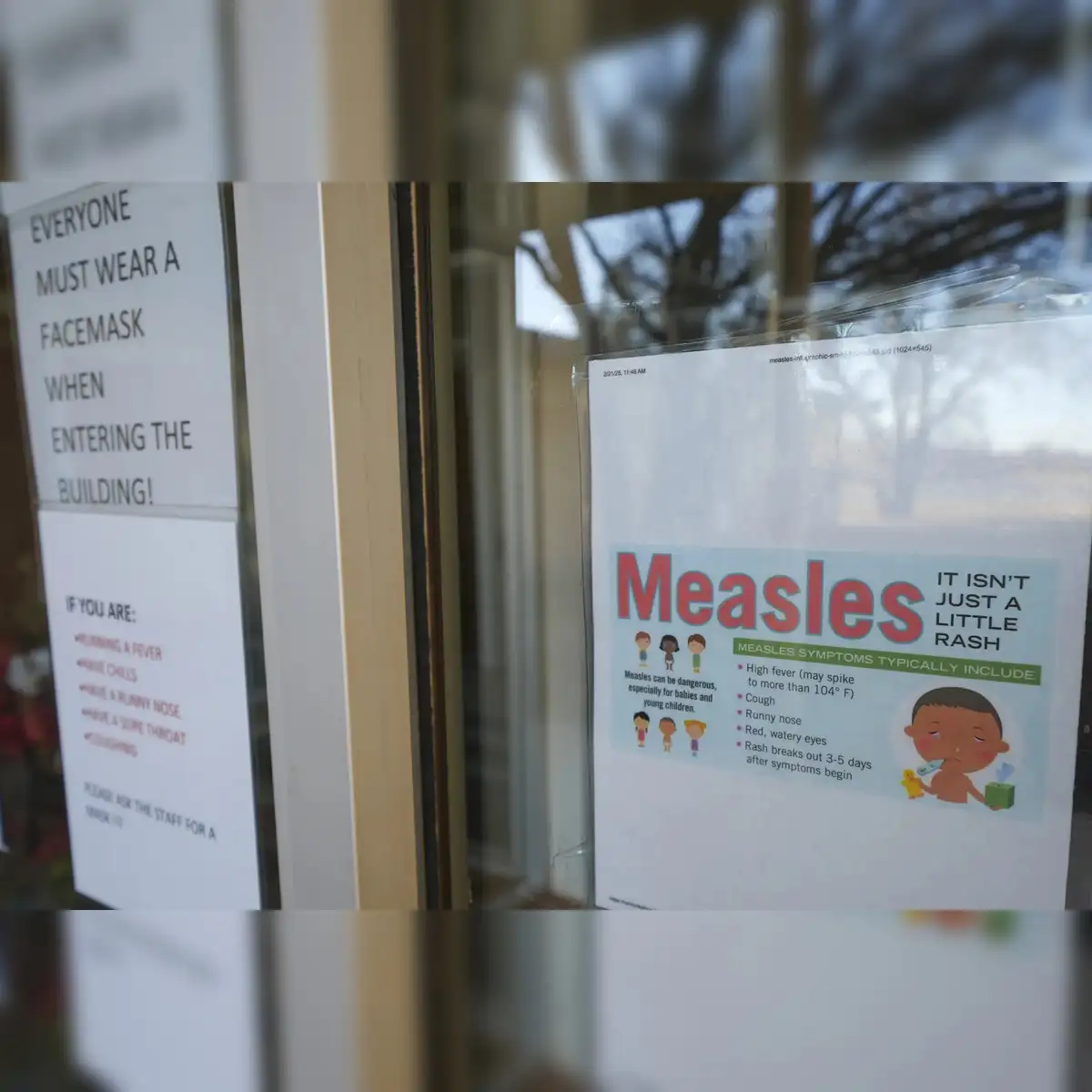Report on Public Health Interventions and Sustainable Development Goals Amidst Alberta’s Measles Outbreak
Executive Summary
A recent measles outbreak in Alberta has highlighted significant public health challenges, particularly within the Low German-speaking Mennonite community. This report details the strategic, culturally sensitive interventions being implemented to combat the spread of the disease and improve healthcare access. These efforts align directly with several United Nations Sustainable Development Goals (SDGs), primarily SDG 3 (Good Health and Well-being), SDG 10 (Reduced Inequalities), and SDG 4 (Quality Education). The initiative, led by community health representatives, focuses on building trust, providing accurate information in the community’s native language, and empowering individuals to make informed health decisions, thereby creating a model for inclusive public health service delivery.
Analysis of the Public Health Crisis and Response
Measles Outbreak Statistics and Vaccination Rates
The province of Alberta has recorded 1,656 cases of measles, a highly contagious disease. The outbreak underscores a critical gap in public health protection, directly challenging the objective of SDG 3, Target 3.3, which aims to end epidemics of communicable diseases. Provincial immunization rates are insufficient to ensure community immunity, which requires coverage of approximately 95%.
- Provincial Average (Two-Year-Olds): 80% with one dose, 68% with two doses.
- Southern Alberta Cases: 945
- North Zone Cases: 534
- Central Zone Cases: 108
Vaccination coverage in specific southern Alberta communities reveals significant disparities:
- Lethbridge: 40% two-dose coverage
- Taber: 29% two-dose coverage
- Medicine Hat: 71% two-dose coverage
These low rates are attributed to a combination of factors, including a broader mistrust in the healthcare system and the proliferation of misinformation, particularly since the COVID-19 pandemic.
Addressing Health Disparities in Alignment with SDG 10
Barriers to Healthcare for the Low German-Speaking Mennonite Community
The Low German-speaking Mennonite community in Alberta, estimated at 25,000 to 30,000 people, faces unique barriers that contribute to health inequalities, a core concern of SDG 10 (Reduced Inequalities). Historical experiences, such as forced immunizations in Mexico without explanation or consent, have cultivated a deep-seated fear and mistrust of public health authorities. This is compounded by significant linguistic and literacy challenges, as many community members do not speak English fluently and may not read or write, limiting their access to credible health information.
The Role of Community Health Representatives in Promoting Universal Health Coverage
Primary Care Alberta’s team of community health representatives (CHRs), led by individuals like Tina Meggison, is a critical component in bridging this gap. Their work directly supports SDG 3, Target 3.8 (Achieve universal health coverage) by ensuring a vulnerable population has access to quality essential healthcare services.
- Since the outbreak began, demand for CHR services has increased by 25%, from an average of 285 to 350 calls per month.
- Services include interpretation during medical appointments and answering health questions in Low German.
- In response to the high demand, Primary Care Alberta is expanding its CHR team, reinforcing its commitment to SDG 3, Target 3.c (Substantially increase health financing and the…retention of the health workforce).
Strategic Interventions for Sustainable Health Outcomes
Promoting Health Literacy and Education (SDG 4)
To counter misinformation and fear, the CHRs have implemented an educational strategy rooted in the principles of SDG 4 (Quality Education), focusing on lifelong learning and health literacy. This involves:
- Focus Groups: Holding sessions in Low German to discuss fundamental questions about measles, its consequences, and the nature of vaccines.
- Digital Outreach: Creating accessible resources, such as a YouTube channel with health information presented in Low German, to provide a source of credible facts.
- Culturally Sensitive Language: Acknowledging the negative connotations of the word “vaccine,” CHRs have adopted more neutral terminology, such as “needle,” to facilitate more open conversations. This approach makes institutions more responsive and inclusive, aligning with SDG 16 (Peace, Justice and Strong Institutions).
Empowerment and Building Trust (SDG 5 and SDG 16)
A key outcome of these interventions is the empowerment of community members, particularly women, to take ownership of their health decisions. An anecdote of a woman realizing she could make private health choices for her family without community disclosure demonstrates a step towards greater personal agency, which resonates with the goals of SDG 5 (Gender Equality). By validating feelings of mistrust and working collaboratively with the community, the program is rebuilding the relationship between citizens and the healthcare system, a foundational aspect of SDG 16.
Analysis of Sustainable Development Goals (SDGs) in the Article
1. Which SDGs are addressed or connected to the issues highlighted in the article?
-
SDG 3: Good Health and Well-being
This is the most prominent SDG in the article. The entire text revolves around public health, specifically the outbreak of a communicable disease (measles) and the efforts to control it through vaccination and community health initiatives. The article discusses disease prevention, healthcare access, and the importance of immunization campaigns.
- Evidence from the article: The text opens by stating, “Quelling the spread of measles involves immunization campaigns and public health protocols.” It provides specific data on the measles outbreak (“spread to 1,656 people in the province”) and details efforts to increase vaccination rates.
-
SDG 10: Reduced Inequalities
The article highlights the inequalities in health access and outcomes experienced by a specific ethnic and linguistic minority: the Low German-speaking Mennonite community. It details how language barriers, cultural history, and mistrust create disparities in healthcare engagement and vaccination coverage compared to the general population. The work of community health representatives is a direct effort to reduce these inequalities.
- Evidence from the article: The article describes how community members “didn’t have the language skills to ask the questions” and how health representatives are needed for “interpreting and answering questions in Low German.” It also points to the disparity in vaccination rates, with a community like Taber having “29 per cent” two-dose coverage compared to the provincial average.
-
SDG 4: Quality Education
This goal is relevant through the article’s focus on health education as a tool to combat misinformation and empower individuals to make informed health decisions. The efforts described go beyond simple information delivery to include culturally sensitive education that addresses specific fears and misconceptions within the community.
- Evidence from the article: The article notes that a “public shift towards misinformation” is a factor in low vaccination rates. Tina Meggison’s work involves holding “focus groups for Low German communities that open the door to… topics, such as, what is measles? What are its long-term consequences? What is in the vaccine that prevents it?” She also directs people to credible sources like her “YouTube channel where she hosts videos in Low German on health topics.”
2. What specific targets under those SDGs can be identified based on the article’s content?
-
SDG 3: Good Health and Well-being
- Target 3.3: By 2030, end the epidemics of… and other communicable diseases. The article’s central theme is the effort to control and quell a measles outbreak, a highly communicable disease. The entire public health response described is aimed at achieving this target.
- Target 3.8: Achieve universal health coverage… and access to safe, effective, quality and affordable essential medicines and vaccines for all. The article directly addresses the challenges of providing access to vaccines and quality healthcare services for the Mennonite community. The work of community health representatives who provide interpretation and support is a clear action towards achieving more universal and equitable access.
- Target 3.b: …provide access to affordable essential medicines and vaccines for all. The core of the article is about increasing the uptake of the measles vaccine within a specific population, which directly aligns with this target’s emphasis on providing access to vaccines for all.
-
SDG 10: Reduced Inequalities
- Target 10.2: By 2030, empower and promote the social… inclusion of all, irrespective of… ethnicity, origin, religion or other status. The initiatives described are designed to empower the Low German Mennonite community to engage with the healthcare system. The story of the woman who felt a “sense of freedom” to make her own health decisions is a direct example of empowerment and social inclusion in health matters.
- Target 10.3: Ensure equal opportunity and reduce inequalities of outcome… The article highlights a clear inequality of outcome: lower vaccination rates and higher measles case counts in the Mennonite community. The targeted interventions, such as providing interpreters and culturally sensitive communication (“Needle is just more neutral”), are actions designed to reduce this inequality.
-
SDG 4: Quality Education
- Target 4.7: By 2030, ensure that all learners acquire the knowledge and skills needed to promote sustainable development, including… through education for… sustainable lifestyles… The health education provided in focus groups and through YouTube videos gives community members the knowledge needed to make decisions that promote their health and well-being (a sustainable lifestyle). Combating misinformation is a key part of this educational effort.
3. Are there any indicators mentioned or implied in the article that can be used to measure progress towards the identified targets?
Yes, the article mentions several quantitative and qualitative indicators that can be used to measure progress.
-
Indicators for SDG 3 (Good Health and Well-being)
- Incidence of communicable disease: The number of measles cases is a direct indicator for Target 3.3. The article states there are “1,656 people in the province” with measles, with regional breakdowns like “Southern Alberta has 945 measles cases.” A reduction in these numbers would indicate progress.
- Vaccination Coverage: This is a key indicator for Targets 3.8 and 3.b. The article provides specific data points: “68 per cent of kids had one dose and 56 per cent had two doses of the measles vaccine by age two in 2024” in southern Alberta, with local rates of “29 per cent in Taber.” It also mentions the desired goal of “95 per cent” community immunization.
- Demand for Health Services: The “25 per cent increase in demand for their services” and the rise from “285 to 350 calls per month” indicate increased engagement with the healthcare system, a proxy for improved access under Target 3.8.
-
Indicators for SDG 10 (Reduced Inequalities)
- Disparity in Health Outcomes: The gap between the vaccination rate in a community like Taber (“29 per cent”) and the provincial average (“68 per cent with two doses”) serves as an indicator of inequality. Reducing this gap would measure progress toward Target 10.3.
- Provision of Targeted Services: The increase in the number of community health representatives being hired (“Primary Care Alberta is hiring two more in the south, a third in the central health zone, and a fourth in the north”) is an indicator of action being taken to reduce inequalities.
-
Indicators for SDG 4 (Quality Education)
- Reach of Educational Materials: The article mentions a YouTube channel with videos in Low German, “with some gaining more than 1,000 views.” The number of views is a direct indicator of the reach of these educational resources aimed at fulfilling Target 4.7.
4. Summary Table of SDGs, Targets, and Indicators
| SDGs | Targets | Indicators Identified in the Article |
|---|---|---|
| SDG 3: Good Health and Well-being |
3.3: End epidemics of communicable diseases.
3.8: Achieve universal health coverage and access to vaccines. 3.b: Provide access to vaccines for all. |
|
| SDG 10: Reduced Inequalities |
10.2: Empower and promote the social inclusion of all.
10.3: Ensure equal opportunity and reduce inequalities of outcome. |
|
| SDG 4: Quality Education | 4.7: Ensure all learners acquire knowledge and skills for sustainable development and lifestyles (including health). |
|
Source: globalnews.ca







